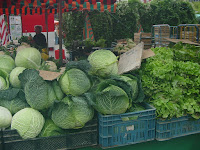Beefsteak Begonia - Propagate Stem Cuttings

Beefsteak Begonia It's time to cut the long above ground root/rhizome off the Beefsteak Begonia and use the pieces to make more plants for friends. This is such a gorgeous plant. The leaves look like lily pads and the flowers are a soft pink. Begonia cutting with leaf After pruning the long, fuzzy above-ground root/rhizome from the plant above, I cut it into sections and put each section into a self-watering container with sterile potting soil. Begonia cutting with new growth Each section of root that I plant has a leaf attached and the cutting is tucked just below the soil level. As you can see, one of them already has a new dark-red-green leaf and a tiny pink flower bud. Beefsteak Begonias like to be on the dry side even when you are propagating the roots to make new plants. Brad's Begonia World






